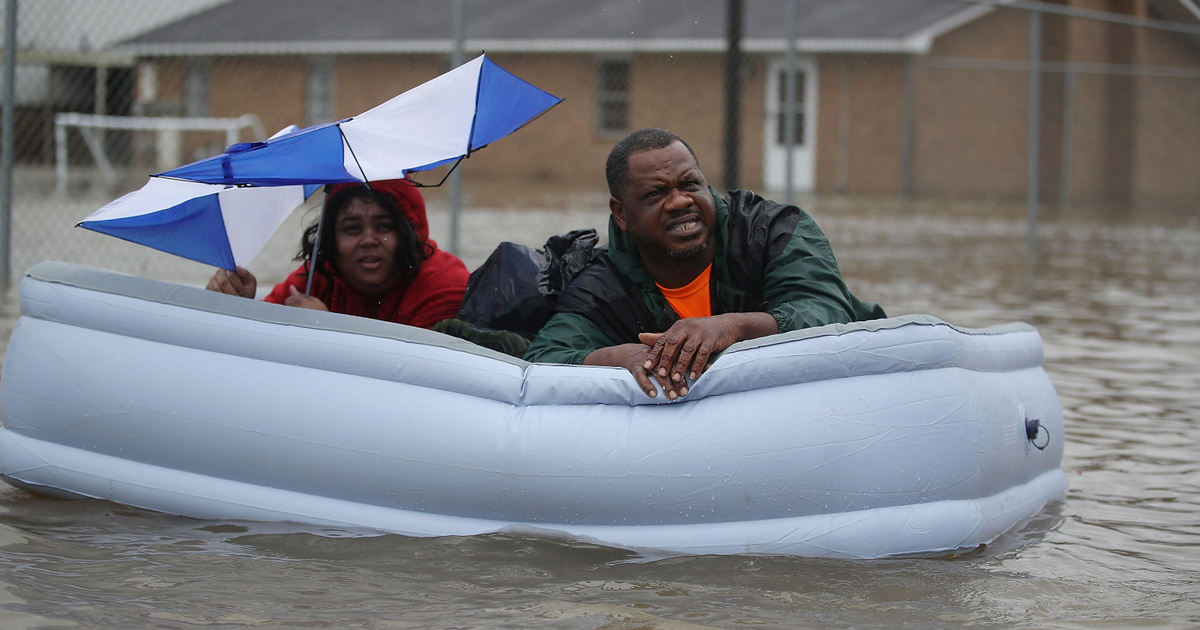The service warned that wind speeds in the Scotland area could reach 130 km.
Jocelyn followed evening prayers, leading to power outages for thousands of people in some places after heavy rain. With simple logic, we can conclude from this that the names of storms follow each other in alphabetical order.
By the way, Jocelyn is the 10th storm of the season. The Met Office, the national weather watchdog, gives a name to any extreme phenomenon that has the potential to cause disruption or damage.
The explanation of the label is simple but practical.
It is easier to track the path of a storm on official and social media if it has a name.
We can even try it ourselves: it will probably not attract the attention expected if the report is only about a storm hitting Lake Balaton, and the next day we will learn that heavy rain has fallen on Nyérgyháza.
It would have a completely different weight if, for example, they reported the destruction of an Erzsike on the lake shore, and then the next day about the damage caused by the same Erzsike at Szabolcs.
The British Broadcasting Corporation (BBC) quoted the Meteorological Office as saying: “Naming storms has led to increased awareness of weather phenomena in other places before they occur.”
Initially, they were named after their mothers-in-law
Tropical storm naming began in the United States in the 1950s. They were a little different from each other, had different paths in life, and were fickle, so since 1953, instead of numbers and occasional designations, hurricanes have been given female names.
There were many names of storms bearing the names of wives and mothers-in-law.
A quarter century later, the gender distinction has become embarrassing, and since 1978 male and female names have appeared alternately in storm classifications.
The list of names is not permanent. Over the past seven decades, dozens of names have been erased in cases where a weather phenomenon was so devastating that it would have been unwise to remember it in the ensuing period.
For example, Hurricane Harvey had 68 casualties in 2018, so its name was immediately changed to Harold.
Born in a storm
Not long ago, the British and Irish services launched their own naming campaign. Initially, the personal names suggested by the public were concerned about storms. Male and female names alternated.
However, this practice changed in the past year. Exceptional weather phenomena are named after scientists, meteorologists and others who have done a lot “for the safety of people in times of extreme events.” Or about ordinary people.
For example, Jocelyn is named after Jocelyn Bell Burnell, an Irish astrophysics professor at the suggestion of an Irishman, who in 1967 discovered the first radio pulsating stars, pulsars.
Isha was born based on a comment, and Henk himself once visited the headquarters of the Meteorological Service. Babette was born during a storm — and later recommended the officially accepted first name herself.
Gerrit, on the other hand, was one of the most famous weather forecasters on Dutch television, and he left NOS, the Dutch public service outlet, last year after 25 years.
Eastern Europe was excluded
The UK could also be threatened by unnamed storms in Great Britain, Ireland or the Netherlands.
Storms are named after the place where they originate. Therefore, in addition to the Western European Group, there is also the Southwestern European Group – which includes Portugal, Spain, Luxembourg, France and Belgium as members.
The Nordic group consists of Norway, Sweden and Denmark.
Fortunately, there is no eastern group, because this region – including the territory of Hungary – is not greatly affected by the weather phenomena that develop and prevail over the Atlantic Ocean.
(Cover photo: Local residents after the devastation of Hurricane Harvey in Houston in 2017. Photo: Joe Raedle/Getty Images)

Comprehensive analyses, world-changing questions, and visions for the future in one volume.













































